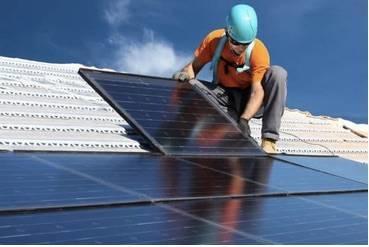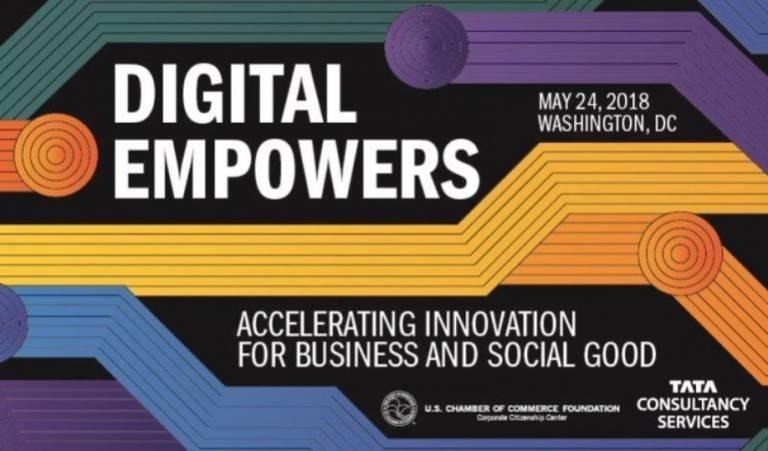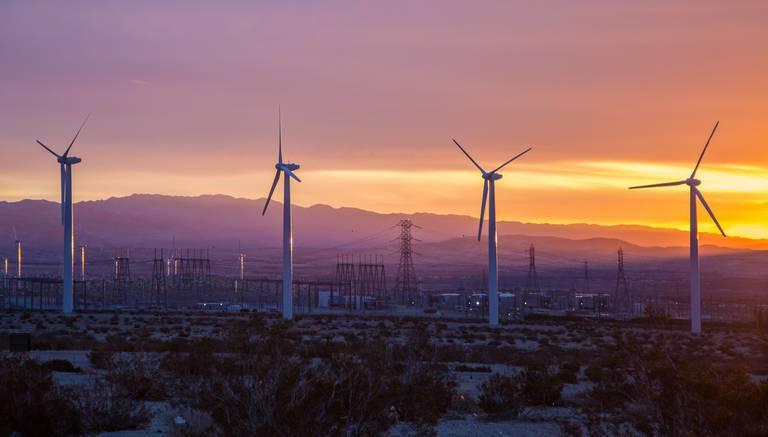Women Can Soar When the Mentored Become Mentors


By Tamika Tremaglio
This is graduation season, and along with the nearly four million postsecondary degrees being handed out, new graduates are getting a lot of good advice from commencement speakers and loved ones.
Allow me to add one more piece of advice, and it’s a simple one to remember: Keep building your network of mentors, advisors and sponsors. The people who gave you good advice about the right professional track, coursework and summer jobs and internships are often the same people who can help you as your professional life gets launched.
This can be particularly true for women. Though they far outnumber men studying on college campuses, research shows they are less likely than men to get meaningful advice and mentoring over the course of their school and professional careers.
And don’t just set yourself up to receive advice. Give it. Some of the best mentors are those who know the power of ongoing guidance as you build a career, navigate the job hunt and then the workplace, evaluate the kinds of bosses you work for, and do everything else they don’t teach you about in a college classroom.
There’s plenty of evidence on the benefits of mentoring in school and after you graduate. The 2016 Gallup-Purdue Index, a survey of more than 11,000 respondents with bachelor’s degrees or higher credentials, found strong connections between mentorship and employee engagement, long-term well-being, and overall engagement in the college experience. Mentorship played a big role in the success of career planning, respondents said. Graduates surveyed also suggested it was less important who students had as mentors than whether they had been mentored in the first place.
But this is a two-way street. It’s typically not enough for women to seek out mentors; they should also seek to become mentors. My own interest in mentoring goes back to lessons from my father, who insisted it was important to lift as you climb. As a result, I make an intentional effort to mentor young people on a regular basis.
The need for women leaders to commit to mentorship is more important than ever. In a survey of more than 1,000 professionals in North America about their experience with mentoring, three-quarters of respondents said their most meaningful mentoring relationship was either “very important” or “extremely important” to career development.
Along gender lines, women were more likely to report that mentoring had profound effects on their careers. The survey also showed that people tend to pick mentors of the same sex.
Nevertheless, this is not only relevant to women. In my role leading Deloitte’s Greater Washington marketplace, we are proud to champion the Mentoring Matters Coalition and the United Way to reach young people across the National Capital Area. We also have a deep mentoring relationship with organizations like the Posse Foundation and BUILD that prioritize diversity and inclusion in their mentoring missions. Personally, I’ve learned that the best advice often comes from a network of mentors who you admire because of their skills – no matter their gender or ethnicity.
If I had to write a letter to my younger, graduating-self, I’d tell her to look for people to emulate and toss out any feelings that I didn’t belong because of my gender, my race or any other defining characteristic. And I’d say this, too: Give back and mentor others, because it can be a great way to discover how far you’ve grown. You might be amazed at what you can learn about yourself, and what you can help others learn about themselves.
---
This publication contains general information only and Deloitte is not, by means of this publication, rendering accounting, business, financial, investment, legal, tax, or other professional advice or services. This publication is not a substitute for such professional advice or services, nor should it be used as a basis for any decision or action that may affect your business. Before making any decision or taking any action that may affect your business, you should consult a qualified professional advisor. Deloitte shall not be responsible for any loss sustained by any person who relies on this publication.
About Deloitte
Deloitte refers to one or more of Deloitte Touche Tohmatsu Limited, a UK private company limited by guarantee ("DTTL"), its network of member firms, and their related entities. DTTL and each of its member firms are legally separate and independent entities. DTTL (also referred to as "Deloitte Global") does not provide services to clients. In the United States, Deloitte refers to one or more of the US member firms of DTTL, their related entities that operate using the "Deloitte" name in the United States and their respective affiliates. Certain services may not be available to attest clients under the rules and regulations of public accounting. Please see www.deloitte.com/about to learn more about our global network of member firms.
Copyright © 2018 Deloitte Development LLC. All rights reserved.
Image credit: You X Ventures/Unsplash
The Carbon Footprint of Solar Panels Manufacturing


By Scott Cramer
Although the use of solar panels is green, many solar panel manufacturing processes are not. To create a solar panel, caustic materials will emit greenhouse gases.
Silicon Tetra-chloride In Solar Panel Manufacturing
To create solar panels, silicon is purified into poly-silicon. The problem is that the refinement process also produces liquid silicon tetra-chloride. If this was in a small amount, it wouldn’t be as big of a deal, but the tetra-chloride production is a 4 to 1 ratio.
Recycling Silicon tetra-chloride produces more poly-silicon. However, the equipment needed is expensive. As a result, not all plants recycle. When silicon tetra-chloride is mixed with water it becomes very dangerous.
What You Can Do to Help Solve the Problem with Solar
Silicon tetra-chloride is not the only byproduct of solar panel production that is harmful to the Utah and Reno Nevada areas we serve. But there are some processes in place to treat these toxic wastes. These processes, however, are expensive and most manufacturers aren’t required to follow them.
Supporting manufacturers that are taking these expensive precautionary measures will help reduce toxins. As of right now, there isn’t an easy eco-label to help customers, but there is a volunteer-based database.
This database, solar scorecard, rates major manufacturers that have volunteered information. Although there is a new scorecard each year, the same companies are not always on it. The average 2016-2017 score was 36. Choosing a manufacturer with a high-to-average score will help make a change in the level of impact the Earth and, you, have in helping the planet go green.
Go Solar Group Uses Axitec panels for both their Utah and Nevada installs. When Axitec last participated, they received a score of 55. This means we hold ourselves to a higher-than-average standard in not just panel quality, but the manufacturing process of those panels.
Solar Panels Recycling Process
Now that you have decided on an eco-friendly manufacturer, it is time to consider recycling. Your system will last 25 plus years, but at the end of that life cycle, they need proper disposal.
Recycling Issues in the United States
In Europe, they have a successful recycling program underway. The problem is that recycling in Europe is a requirement. The United States, on the other hand, has an unregulated market. This means that recycling has to be cost-effective for people to do it. Because less than 11% of each panel has salvageable metals there isn’t much money in recycling.
This has made PV recycling a bit of a challenge in the US. The big boom for solar installations began in 2010 for the United States. This means that most Americans won’t need to worry about recycling until 2035, but even today there is a need for it. While most solar panels aren’t losing their efficiency yet they can get damaged. Damaged panels need proper recycling today, not in 17 years.
The United States Current Solar PV Recycling Programs
Although nationally mandated programs don’t exist states are trying to require PV recycling. In 2021 Washington will start requiring manufacturers to have end-of-life recycling programs.
Recycle PV is a recycling company that services the whole nation. If you have panels that have reached the end of their life, but there is no broken glass they will pay you to recycle them. If your panels are broken they still need to be recycled and so for a fee, they will take them.
SEIA also has a national recycling program. They partnered with ECS Refining, Green Century Recycling, Cleanlites Recycling, and First Solar. As time goes on, they hope to partner with more PV recyclers.
How Much Does It Cost to Recycle Solar Panels?
As mentioned above, recycling solar does cost money. The price depends on the type of solar panels are involved and how many. Most of these recycling programs are between the recycler and the solar panels manufacturer. If your solar panels manufacturer doesn’t recycle, you can call the recycling company directly. As time goes on and more solar panels are recycled, the price will decrease.
There’s an argument to be made about which generation is more likely to know how to be environmentally friendly. While Nielsen reports that sustainability is driving the millennial generation, Trulia found that older generations reportedly may know how to go green more effectively.
While more millennial citizens (24 percent) strongly agree to being an environmentally conscious person versus 19 percent of baby boomers, only 34 percent of millennials take action other than recycling compared to 44 percent of baby boomers.
Some of those eco-friendly activities from an older generation include a wide range of green activities such as buying energy efficient appliances and energy efficient home upgrades.
While economics may be a determining factor in just how active a person can be in going green, there are plenty of economical ways to participate more. Here are some suggestions.
Lights: Whether moving into a new apartment or home or already living there, take a look at the ceiling and lamp lights currently running. If you’re unfamiliar with eco-friendly living, light bulbs are a significant way to start the process.
Popular light bulbs such as the Philips LEDs use 90 percent less energy than traditional incandescent lights. While they may initially cost a bit more, incandescent light bulbs can last up to 22 years, which is about the lifetime of 25 incandescent light bulbs.
And during the day when lights aren’t needed, consider opening the blinds to let natural sunlight inside. With daylight savings time ending and beginning, there are times when the day will be lighter for a longer period of time. Take that into account when setting those light timers.
Minimize electronic appliance usage: Earth Hour falls in March, Earth Day in April. Whether you choose to dedicate the entire day or one hour, just consider unplugging all electronic appliances for one hour.
There are reportedly 172 countries and territories worldwide who will join you. And by turning off all electronic appliances and then slowly plugging them as you need them once the hour is up, it’s safe to say you’ll find that some of the appliances you used to keep plugged may not be as necessarily on a day-to-day basis. Homeowners using a gas stove instead of an electric stove may help, too.
Insulation: In cold-weather climates, it may be easier to just turn the heat up. But consider insulating your home to keep warm weather in during cold months and warm weather out during hot months.
Windows and window treatments are an easy fix to create a comfortable home environment and could lower the usage of energy drainers such as air conditioners and ceiling or mobile fans. Investing in a smart thermostat may also help.
Shorten water usage: Avoid wasting water while taking a shower. In the U.S., approximately 17 percent of home water usage is from showers and that can amount to 100 gallons of water daily.
Actually getting into the shower as soon as the water is on as opposed to letting the water run until it reaches a certain temperature or doing other bathroom duties (brushing your teeth and combing your hair) can conserve thousands of gallons of water.
Shortening a shower to a couple of minutes will also help conserve water and decrease your power bill. Keep water usage in mind when it comes to cold water wash cycles and watering the lawn, too.
Solar Power Reduces Pollution
Travel smart: Not only can opting for a bike over a car create an eco-friendly environment, but it also improves health. If a car is necessary for travel, consider public transportation and/or carpooling over driving separately.
Ride-sharing companies are another way to showcase how to be green, specifically by utilizing the “pool” riding option on your smartphone apps.
Plant trees: Referring back to light usage, planting trees is not only a good way to stay fit in gardening but also a way to potentially control the heat or need for air conditioning in your own home.
Gardening can also significantly reduce the grocery bill and shrink a waist line if the plants include fruit and vegetables. The meat industry alone contributes to one-fifth of man-made greenhouse gas emissions.
Meatless Monday participants, even those who aren’t vegans or vegetarians, are also a highly recommended way to learn what does it mean to go green, specifically when it comes to decreasing pollution related to animal agriculture wastes.
Recycle: In addition to sorting recyclables from non-recyclables, opt out of purchasing disposable plastics. Keep recyclable grocery bags in the trunk of your car, tote bag and/or bicycle basket to make more use of the bags and/or food containers you already have when visiting restaurants or grocery stores.
No wood-burning: While that electric or wood fireplace may look pretty, unfortunately it can also contain 100 different compounds that contribute to pollution. Consider solar energy to warm your home, cabin or office instead.
Solar Saves You Money
Bulk food pricing: For bigger families, buying food in bulk may seem only logical. However, even for single families, buying food in bulk will save money and utilize less waste — one of many benefits of going green.
Something as simple as buying a bigger container of ketchup instead of a purse-sized version, specifically if you know you use a condiment item like this on a regular basis, helps to conserve plastic. Or, opt for glass instead.
Solar home investment: Homeowners and/or business owners installing a system of solar panels onto their property roofs gives them the opportunity to control how the sun affects them.
To help further explain what is green energy, photovoltaic technology releases electrons that create direct current (DC) electricity. Those solar panels will convert DC electricity into alternating current (AC) electricity, which helps your utility service export surplus energy and import power when needed.
Opting for solar panels will also provide a fixed rate for utility bills because homeowners and business owners will be able to predict their everyday usage.
By learning more about everyday buying habits, home usage, business usage and electronic habits, groups from all ages can improve on helping to fight against carbon pollution.
And the more people who participate in one or more of the suggestions above, the more like you may be able to influence another millennial or baby boomer along the way.
Hazardous waste makes recycling solar panels necessary the question is when and how. If solar arrays aren’t recycled they will end up in landfills and toxins in the panels could leach out. We need to manage these materials both at the beginning and end of each solar panel life cycle.
Scott Cramer is President, Go Solar Group
Photo: Go Solar
Empowering a California Asparagus Farmer to Conserve Water Through IoT Connectivity


By Swathy Ramaswamy
Being an organic farmer can be challenging. Farmers are faced with constant pricing pressures from conventional competitors and, in places like California, water limitations and labor shortages also can be an obstacle. That’s why many organic farmers are looking for solutions to help them be more innovative and efficient in growing their crops.
WaterBit and AT&T are helping Devine Organics in their efforts to both conserve water and grow more asparagus in California’s Central Valley. As a family-, woman-, and minority-owned business, Devine Organics founder Elvia Devine is driven to grow the finest fruits and vegetables with an eye toward conservation and environmental stewardship. Elvia is one farmer who realizes that efficiency and sustainability must go hand-in-hand.
That’s why Devine Organics teamed up with WaterBit and AT&T. WaterBit installed small, solar-powered sensors across the asparagus fields. These sensors collect information on soil moisture and other field conditions. They require no maintenance and are placed under the foliage, so they don’t interfere with fieldwork and harvests. Data from the sensors is sent to a communications hub that can be thousands of feet away. The hub then uses AT&T Internet of Things (IoT) technology to send highly secure data over the AT&T LTE network to the WaterBit app. There, the information is analyzed to determine if a section of the field needs more or less water, and the farmer can remotely control irrigation from their smartphone, turning valves on and off.
Thanks to this technology, Devine Organics can now irrigate its field with incredible precision — releasing water exactly where, when and for how long it’s needed. The WaterBit dashboard provides a comprehensive overview of the field’s moisture and irrigation status, and because it’s connected via the AT&T network, the Devine Organics team can access the data 24/7 via computer or smartphone.this video on www.youtube.com</a>, or enable JavaScript if it is disabled in your browser.</div></div>
Since installing WaterBit sensors on a 40-acre field in December 2017, Devine Organics has the potential to reduce its water usage by more than 750,000 gallons — the equivalent of more than 43,000 Americans skipping a shower for a day. There has also been a 5% drop in greenhouse gas emissions from fuel used for pumping water and truck trips to manually check the fields. Most importantly, due to better irrigation processes, Devine Organics has harvested nearly twice as much asparagus from the field since the WaterBit technology was put into place.
The Devine Organics team is now looking to expand the use of WaterBit to other crops, such as pistachio and melons, and into Mexico, where they operate other large organic farms. And beyond their own crops, they are hoping to share the lessons they’ve learned with other farmers trying to reduce their environmental footprint and increase their harvests.
To find out more about our work with Devine Organics and WaterBit, watch the video, and read the full case study here.
Swathy Ramaswamy is Lead Product Marketing Manager, IoT for Good
Photo: Devine Organics
Originally published at Connect for Good.
Should We Be Concerned About Running Out Of Oil?


By Scott Huntington
With the rise of green energy solutions around the world, the worldwide panic over oil use has faded to a dull roar. Still, oil and other nonrenewable fuel sources remain the driving force behind most industrialized and pre-industrialized nations.
From the soot-choked streets of Beijing to the American dream of an open road and a set of wheels, fossil fuels keep the world turning. Oil, a cornerstone in the distinctly American lifestyle, has been a cause for concern and criticism for many decades — so much so that one must ask: Will we ever run out?
Scientists seem somewhat divided on this, and it's apparent that measuring the volume of crude oil deep within the earth is somewhat more difficult than using the world’s longest dipstick. Instead, the best scientific predictions are just that: predictions and estimations as to the exact volume of oil available about the amount already used. Further, with the secrecy surrounding international business, the exact reserves and contributions of some oil-wealthy nations remain unclear.
To answer the question in short form, we don’t know.
Green Energy Revolution
To begin, we confront a series of significantly unpredictable factors. Perhaps the largest: We don't know humanity will continue using oil to the point that we are in danger of running out. Assuming oil is a finite resource — which most scientists seem to agree on — and that human consumption continues to rise with population growth, we will inevitably hit a point at which we use all the oil we can reach.
However, this is not necessarily the case. First, with the significant advances in green technology — primarily solar, wind and geothermal — a new challenger has risen to topple fossil fuels from their throne. Every year, green energy becomes more affordable and available to the public, and more people begin to transition away from traditional energy sources. We see this with the rise of electric cars, with charging stations beginning to crop up across the U.S.
The main roadblock for most people interested in going green is the price point: It still takes a couple of years of problem-free solar panels or wind turbine use before someone can expect to break even on their initial investment. For others, going green is not an option, as they live in apartment complexes or otherwise urban settings, preventing the use of bulky green energy options.
With greater acceptance of green energy as a viable source and the continually lowering prices of green energy setups, it could quickly rise to usurp fossil fuels. It is likely if the trends continue — gas, oil, etc. maintaining a similar price, while green energy continues to become more affordable as more people adopt it — there will eventually come a time when it makes less financial senses to pay for oil or gas. People owning electric cars have already begun to see a return on their investments, and this will only continue to advance.
In other words, if the current trend in green energy continues, we will never run out of oil, because we will stop using it altogether.
Other Unpredictables
As previously noted, we don't know how much oil is available within the earth. Some warn of a worldwide oil deficit. However, our best guesses come with significantly limited information. At any moment, we could discover a new oil reserve deep underground, just as our current reserves could become depleted in a matter of decades or years.
We also can't know exactly how price fluctuations in the overall oil supply would impact consumption. For instance, if oil does become more scarce, the price of gasoline will naturally rise. Suddenly, people will find ways to start riding their bikes to work and may even cancel that road trip they had planned for the summer. Many will even begin looking for alternatives to oil — perhaps investing in an electric car in the process.
A drought in the worldwide oil supply could be exactly what it takes for green energy to become universally accepted.
Black Gold
If we can be certain of one thing, it is that the future of oil is uncertain. In the next decade, we could see green energy become so affordable that oil and other fuel sources lose relevance entirely. Likewise, new reserves or available oil could drop the price of gasoline to the point that we all hold off on buying that electric car for a couple of years.
How Digital Tech is Transforming Social Innovation


In the digital revolution that has been called “Business 4.0,” new and rapidly evolving technology has transformed business practices and strategies. Now, that part of the non-profit sector focused on social issues is undergoing a similarly radical revolution. Innovative technologies such as blockchain, design thinking, virtual reality, robotics, AI, and cloud analytics offer new opportunities to increase access and equity to individuals and communities.
Every day, non-profit organizations across the U.S. receive billions in contributions, supporting causes from education, health and the environment, to social wellbeing and arts and humanities. These organizations face many challenges, including governance, reporting, impact, and scale. Similar to how digital technology is helping enterprises grow and transform, tech can play a pivotal role in alleviating these societal issues and provide an opportunity for social innovation.
The question for nonprofits is, how to best harness new tech’s tremendous potential for greater impact in addressing problems in the areas of health, education, and the environment?
To provide some answers, Tata Consultancy Services, in partnership with the U.S. Chamber of Commerce Foundation, is convening on May 24 Digital Empowers: Accelerating Innovation for Business and Social Good at the Chamber of Commerce in Washington D.C. The forum is bringing together leaders from business, technology, government, policy, and citizenship with on-the-ground partners who are shaping the future of innovation and social impact to discuss with nonprofit leaders how technology can solve pressing societal challenges.
The forum’s objective is to increase awareness and understanding around the impact of advancements in technology. Speakers from across industries will share how their organizations leverage new technology and digital innovations.
“In the Business 4.0 era, we have the unique opportunity to harness the abundance of digital technologies to leapfrog innovation for business and social good,” said Balaji Ganapathy, Head of Workforce Effectiveness, TCS. “Having leaders from across sectors involved helps to develop a shared vision, increases awareness, advocacy and public-private partnerships, and creates a paradigm shift towards creating exponential value for our fellow citizens and the community.”
“At the most basic level—businesses are problem solvers. From providing invaluable services to innovating new products, the private sector—by design—finds opportunity and drives solutions,” said Marc DeCourcey, Senior Vice President, U.S. Chamber Foundation. “So it only makes sense that leading businesses are also leveraging technology to solve some of the greatest social issues of our time.”
The event’s program will discuss ways to develop partnerships, funding opportunities and human and technology capital. Featured speakers include experts from TCS, Deloitte & Touche, Lockheed Martin, and the White House Office of Science and Technology,
TCS and USCCF will publish a report defining the strategies organizations can utilize to benefit from advanced technology.
For details, visit here.
Corporations and Their Evolving Roles in the Social Good Economy


By Kim Lynes
For most companies today, a philanthropic arm of the business is not a nice-to-have—it’s a must-have. This is because social responsibility efforts now influence four key areas that corporations rely on for success: consumer purchasing behavior, employee retention and acquisition, attractiveness to investors, and business growth. To be considered an organization that is sustainable both now and in the future, you need a comprehensive, strategic corporate social responsibility (CSR) program. A successful CSR program reaches across an organization, with all departments focused on improving the triple bottom line (social, environmental, and financial goals) and showing tangible, meaningful impact. In this paper, we will explore what drove this transformation and shift in expectations for corporations and their social actions and how it has positioned corporations as a key player in the broader social economy.
Changes That Caused This Shift
We can explain the shift in the public’s expectations of CSR programs with one word: accountability. There has been a growing trend across all sectors (government, public, and private) where sitting on the sidelines as global issues and concerns grow is no longer an accepted practice. A large driver of this change is visibility brought about by social media, and the ability of the public to not only directly interact with organizations, but hold them accountable as well.
We’re seeing corporations react to these shifts. In 2015, countries around the world committed to a global action plan with the Paris Agreement, aimed at taking steps towards avoiding hazardous climate change. The private sector played a role in the negotiations of this agreement and will be a primary player in ensuring that the new goals are reached when the agreement goes into effect in 2020. Several global companies have pledged to reduce greenhouse gas emissions, with more than 150 corporations signing the American Business Act on Climate Pledge (“How the Paris Climate Agreement Impacts Corporate Sustainability and the Private Sector,” Business Wire). The conclusion from these commitments is clear: Corporations need to be including corporate sustainability goals in their business goals and maintaining transparency about their successes. Both the government measures as well as public scrutiny will require this level of accountability.
In the United States, when the White House announced its intention to exit the accord, private sector engagement with the agreement remained strong and public. After this, 25 major companies released ads in newspapers to announce their continued commitment to their sustainability pledges. (“Climate Change is Real’: Many U.S. Companies Lament Paris Accord Exit,” New York Times).
Another key initiative driving more accountability from corporations and their CSR programs is the United Nations Sustainable Development Goals (SDGs). This initiative is important because it provides something new for corporations: a framework that companies can follow for creating and scaling their corporate responsibility strategy that also considers their business goals (“How Companies Can Champion Sustainable Development,” HBR). The SDGs contain 17 goals—an overwhelming amount for most. However, corporations have begun to identify those areas most relevant to their operations and commit their resources to affect those specific goals. IMPACT 2030 was also developed by the private sector to help guide corporations in achieving the SDGs through employee volunteer programs. Finally, the United Nations Global Compact is an initiative created by CEOs, so companies can align their strategies and operations with certain societal goals. Dubbed the “world’s largest corporate sustainability initiative,” by UN Global Compact, it is yet another way global companies have taken steps toward incorporating CSR into their core business practices.
This theme of strategizing CSR efforts and focusing efforts where it makes sense for your organization is one that has risen with the evolution of corporations’ roles in the social good economy. Why? Again, accountability. It isn’t good enough anymore to treat CSR as an aside that is separate from your core operations. Not having a CSR strategy or not following through on your CSR goals can negatively affect your brand value with consumers, potential employees, and investors.
Excerpted from Corporations and Their Evolving Roles in the Social Good Company
Kim Lynes is Sr. Marketing Manager (Content), Blackbaud
Photo: Blackbaud
Distributed by 3BL Media and originally published by Blackbaud.
Why Companies Are Turning Toward Sustainable Buildings


By Scott Huntington
Early indicators and hype have led us to believe the green revolution is indeed underway. However, the transition has been a slow one — there was no '90s tech boom and no industrial revolution of green tech. Instead, the changes have come in dribs and drabs: LED lights replacing the standard incandescent option, a slow creep toward better gas mileage and localized movements to instruct sustainable living and practices. The large-scale, sweeping changes have yet to commence — if they ever do.
A few roadblocks traditionally stand in the way of this possible shift. First, there is a high perceived cost of entirely switching systems. Sustainable and green technology typically still have one of two limitations: they’re either expensive or unreliable. For their buildings, companies tend to rely on the old standbys of metal, glass and concrete, as well as the norms of gas heating and coal-sourced electricity. For many businesses around the country, cost reduction is king.
In spite of this philosophy, some companies have begun a steady shift toward more sustainable buildings.
The Sustainable Option
In an increasingly fast-paced and interconnected market, building green has a few clear advantages.
First — and perhaps most obviously — it’s beneficial for the environment. The nature of competition has forced businesses to evaluate everything from a cost-benefit point of view, and this has traditionally kept sustainable practices from widespread adoption. Today, the key to success is “disruption” — impacting target fields and changing the game. A company that can evoke an image of significant change is likely to find success in tight areas.
For some companies, the differentiation has come in the form of sustainability — setting themselves up as pillars in the community through sustainable practices and community outreach. For many smaller companies, pulling their image away from the corporate in favor of the community has been a hugely effective tactic that results in niche markets and the ability to sell a product for reasonably higher prices.
Employment, too, draws some benefits from branding as a sustainable company. With Millennials graduating college and entering the workforce, the first generation grown on the promises of a sustainable world will likely have a more significant impact on the state of the workplace. The collective expectations of this generation will become more and more the status quo, and companies hoping for continued success will need to start converting to sustainable, flexible workplaces.
In other words, the shift toward sustainable buildings is one of slow inevitability. With the entrance of the millennials, a need for sustainability will likely gain prominence, and several companies have already capitalized on the future trend. Green concrete, for instance, has already become the main product of several companies. Precast concrete can be made from recycled materials, and features even greater durability and reliability than more traditional options.
In the case of buildings, the long-lasting and environmentally sound models have been drawing a considerable amount of attention. Those companies that look toward the future are already shifting their building projects to more sustainable — and often beautiful — ventures.
A Concrete Future
A tremendous amount of uncertainty still surrounds the prospects of sustainable buildings. Unfortunately, the clear majority of new buildings are still built using traditional methods of concrete, steel and glass. In a strange turn, recent scientific research has centered around transforming glass back into the sand that it originally came from, citing a shortage of sand in certain regions.
However, a couple of factors seem to be pushing us in the direction of entirely green cities. Millennials — the most environmentally-conscious generation yet — should become 50% of the workforce within the next decade, and they've already made their preferences for green tech clear. Likewise, companies have begun developing competitive, sustainable models for building materials, which will become more cost-effective in time. With a small push, the sustainable revolution could finally be underway very soon.
Are We Really Limited To ‘One Cause at a Time’?


While a new wave of feminism rightly takes its place in the spotlight, the LGBT community applauds from the sidelines. But, we are all allies in the fight against discrimination and our strength is in numbers.
It is more critical than ever that the strides made in equality for the LGBT community are upheld. With Trump threatening to rescind laws made during the Obama-era and a surge of right wing populism across Europe, it is not just economically important that we maintain the pressure on LGBT rights, but culturally too.
Technological advances and the interconnectivity afforded by the internet have brought the challenging conditions faced by many LGBT individuals across the world into sharper focus. But, these advances also increase the responsibility, and the opportunity, for those with political and economic heft to ensure that hard-fought gains are not undone.
So, how can governments, companies and individuals become advocates? What does it take to translate good intentions into meaningful action? And how can united efforts transcend borders to improve the legal rights and treatment of LGBT people?
It’s an effort that’s best trodden with allies. Which is why Pride and Prejudice gathers leaders in business, politics and society to address LGBT issues head-on. We have conducted EIU research on the theme of this year’s event: the path to advocacy and this has revealed a slide in the focus on LGBT rights. Despite that, forty-one percent of executives believe their organizations are prominently and publicly advocating for LGBT rights; almost every other diversity category scored higher: women's rights with 64%, racial/ethnic minority rights, 53%, and disability rights, 47%.
Furthermore, there is also a sense that other areas of inequality have taken a greater mindshare: 33% of executives told us that they believe the public expect the most change around women’s rights, but only 5% thought LGBT rights was high on the public agenda.
No one cause is more or less important than the other, but when different marginalized groups are fighting for equality we should come together to push for progress.
Following the Weinstein scandal, the voices of the #metoo movement quickly expanded to include the alleged underage male victims of Kevin Spacey. But some of the LGBT community took to Twitter to argue that the language used in the campaign could have been more inclusive. An LGBTQ-focused therapist, Nicole Hast, wrote, ‘As we see all the #MeToo statuses, let's remember that trans and nonbinary folks are often those most impacted by rape culture.’
According to a survey by gay men’s health charity GMFA, some 62% of British gay men have been touched or groped in a bar without consent. In the US 40% of gay and 47% of bisexual men have experienced sexual violence other than rape. So why, some asked, hasn’t the LGBT community had its own #metoo moment?
Likewise, March 8, International Women’s Day, brought with it a flood of reports about inequality from the pay gap to promotions, but wage inequality regarding LGBT is often harder to quantify, and therefore receives less attention.
With progress in one sector and not another, we still fail to move toward to what The Economist calls an ‘Open Future’, a belief in human progress, distrust of powerful interests and respect for individual freedom. That’s why we must always remember to be allies as well as activists in our chosen cause and shine the light wider when we have it.
Image credits: Tanushree Rao and Tristan Billet via Unsplash
We Mean Business, InfluenceMap Release New Lists of Climate Action Leaders


We Mean Business, a global coalition of companies that supports climate action, is growing. The network has announced that the number of companies supporting “a low-carbon transition” across the globe is now up to more than 700.
According to the organization, more than 100 companies have approved science-based targets (SBT) for reducing greenhouse gas (GHG) emissions. The list of companies that are working to align strategies with those set out by the Paris Agreement includes General Mills, Procter & Gamble, L’Oreal, Electrolux, Levis and Nike. Mahindra Sanyo Special Steel, which announced its support this year, became the first company from India to join.
“Combating climate change is among today’s most urgent global challenges, and also one of our biggest economic opportunities,” said Uday Gupta, Managing Director, Mahindra Sanyo Special Steel. He said addressing climate action was a way of “future-proofing ... growth and profitability. The company’s SBT commit to reducing Scope 1 and 2 and 3 emissions by 35 percent per ton of steel produced by 2030 (from a 2016 base year).
Anand Mahindra, chairman of the Mahindra Group, has also challenged companies across the globe to reduce their carbon emissions.
“I am inviting all companies, particularly those that emit the most, to commit to set science-based targets,” Mahindra said.
Science-based targets set by members are reviewed and approved by the Science Based Targets Initiative, a partnership between CDP, World Resources Institute, the World Wide Fund for Nature, and the United Nations Global Compact. The nonprofit is also a member of We Mean Business. Members have access to workshops, peer guidance and other resources.
According to We Mean Business, the collective impact represents a reduction of about 2.62 gigatons of Scope 1 and 2 emissions, or the equivilant of India’s total annual emissions.
The 700+ companies, which have a collective market cap of over $16.7 trillion, have made more than 1,170 commitments to ambitious climate action.”
The British nonprofit InflucenceMap, which is also a member of the coalition, recently published a list of the top companies that have been working to influence climate policy in governments across the globe. Twenty businesses, ranging from utility providers to social media companies made this year’s list.
The roster includes long-time sustainability backers like Unilever, GSK and IKEA, but it also showcases some new faces as well, such as Iberdrola, which has invested heavily in renewable energy in recent years and has been an outspoken supporter of climate action. The British utility company National Grid, which also provides power in New York State, was also on the list for its innovative strategies.
According to InfluenceMap, a common characteristic that linked many of the members on this list was strong CEO leadership and support for climate action initiatives.
InfluencerMap also mentioned a few runner-ups that it felt may have a good showing next year, including Walmart, Pepsico and Johnson & Johnson, which were considered “supportive but not as strategically active as their A‐List counterparts.
A full list of the identified companies can be found at InfluenceMap’s website.
Flickr image: Tony Webster
Ecocentricity Blog: This One Is A Step Back


By John Anderson Lanier
If you were to look back at all the blogs I have written (by my count, we are at 142), you might notice a trend. Besides being slightly whimsical and heavy on the Star Wars references, my blogs tend to be positive in orientation. I write a lot of “How cool is this?!?!” and “Here’s how sustainability is winning” posts. That’s mainly because I find lots of cool things and because sustainability is winning.
For instance, three weeks ago I could have written something like the following:
“Did you know that Mercedes-Benz manufactures batteries for home storage, and they are actively selling systems in the United States? That means that there is another player in the domestic market for residential batteries, vying for market share with Tesla’s Powerwall and Sunrun’s BrightBox. When coupled with solar power generation, these systems are proving the commercial viability of distributed energy at the residential scale. More competition will only drive prices down for consumers, accelerating the transition to renewable energy generation. Sustainability is winning!”
But if I had written that three weeks ago, I would still be wiping the egg off my face. Take a look at this article in Green Tech Media discussing the closure of Mercedes-Benz’s not-yet-two-years-old U.S. home battery subsidiary.
I share this news because it’s important for environmentalists to acknowledge each step back at the same time we celebrate every two steps forward. We lose our credibility if we trumpet sustainability’s successes and ignore its failures. And a major multinational corporation exiting the residential battery space so quickly is a step back.
The article explains what happened quite well. One challenge is that Mercedes-Benz’s batteries are engineered for vehicles, which go through a lot more wear, tear, and extreme conditions than homes do. The costs associated with being engineered beyond the needs of a home battery harm their ability to compete. Moreover, the demand in America for such systems is still nascent. For fully legitimate reasons, Mercedes-Benz wasn’t willing to be patient for the demand to pick up, and they likely should have simply stayed out of the market in the first place.
Let me be clear – I’m still betting on the long-term potential of residential energy storage (or at least I would be if you could bet on such things). Too much money is being invested across the globe in energy storage research and development. Someone is going to invent the next big thing, and the trend curve for Moore's Law will begin to apply to residential batteries. Admittedly, that last sentence still has a lot of “hope” baked into it (though not “a new hope” … teehee). But it is also very believable that batteries will eventually break through their current technological barriers.
And as that last sentence shows, I also abuse alliteration in my blog posts. It’s a trap for me I guess. Where is Admiral Ackbar when I need him?
(For non-Star Wars fans, that was another Star Wars reference, and you’re welcome. Here’s to more ridiculousness over the next 142 blog posts.)
John Anderson Lanier is Executive Director, Ray C. Anderson Foundation